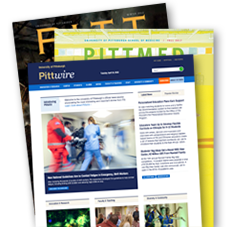University Center for Teaching and Learning to Transform, Enhance Faculty and Student Experience
PITTSBURGH—University of Pittsburgh Chancellor Patrick Gallagher today announced the formation of Pitt’s University Center for Teaching and Learning. The center is among a set of initiatives associated with the University’s strategic plan.
The University Center for Teaching and Learning will work with faculty to advance innovative educational practices and principles. As part of this effort, many resources of the current Center for Instructional Development and Distance Education will be dedicated to the creation of new centers and innovative programs focused on teaching, learning, and educational technologies in support of advancing educational excellence.
“Launching in the fall of 2016, the University Center for Teaching and Learning will serve as the operational and programmatic heart of Pitt’s ongoing focus on creating a robust teaching and learning environment,” said Provost and Senior Vice Chancellor Patricia E. Beeson. “This is an exciting example of how the strategic plan is moving the University forward.”
“Successful outcomes require a shared vision, teamwork, core knowledge, global perspectives, evolving technology, and diverse partners,” said Cynthia Golden, director of the University Center for Teaching and Learning. “Pitt is using these principles to reimagine our approach to teaching and learning in an endeavor that will build upon existing expertise to empower faculty as leading teachers and prepare Pitt students for lives of impact.”
Among the key features of this University-wide endeavor will be a set of three affiliated resource centers.
- A Center for Diversity in the Curriculum will expand the scope of existing University programs meant to enhance multicultural relations. The center seeks to increase faculty members’ capacity to develop course materials reflective of America’s increasingly diverse society, increase faculty awareness of diversity issues, and foster inclusive learning environments.
- A Mentoring Center will serve as a central resource to support the professional development of Pitt faculty as teachers and scholars. By teaching faculty to be effective mentors and mentees, the center hopes to strengthen professional connections between faculty and students.
- A Center for Communication will help faculty members articulate the significance of their work to core audiences, including other academic scholars, the media, and the general public.
In addition to the resource centers, the University Center for Teaching and Learning will deploy other programmatic strategies to advance teaching excellence.
- A Course Incubator will bring together small teams of experts—such as a faculty expert, an instructional designer, an educational technology specialist, and a learning science researcher—to transform curricula in targeted courses. The incubator’s primary objective will be to foster educational innovations based on the latest field research and implement them promptly.
- A Teaching and Learning Exchange will work to incorporate the latest research on effective approaches to teaching and learning. Building upon the success of existing Pitt centers in the disciplines, and adding additional centers focused on pedagogical research and teaching in the disciplines, the Teaching and Learning Exchange will create a network of centers to advance the sharing of ideas and best practices among faculty across the University.
- A Micro-Credentialing Program will enable faculty to pursue additional credentialing—in such areas as pedagogy, teaching techniques, and professional development—to enhance instructional skills. These same resources will also be applied to enhancing the teaching careers of Pitt graduate students in specific disciplines.
More information on the new center is available here.
###
6/24/16/amm/klf/jm
Media Resources
Schools of the Health Sciences Media Relations
For more information about Pitt's schools of dental medicine, health and rehabilitation sciences, medicine, nursing, pharmacy, and public health, click here >
To locate stories from health science schools prior to 2013, visit the UPMC news archives »
Urgent Question?
University of Pittsburgh news reps are available to answer urgent media inquiries. Outside of regular business hours (Mon-Fri, 8:30 a.m.-5 p.m.), please email us at media@pitt.edu.
News reps for University of Pittsburgh Health Sciences schools can be reached outside of regular business hours through the paging operator at 1+412-647-2345.


